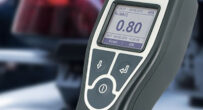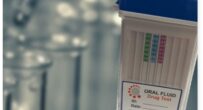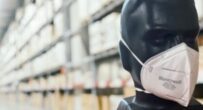Can Drugs Stay In My System for Long Periods?
If you’ve recently consumed an illicit drug, you may be wondering how long you’ll need to wait before driving, or going to a workplace where you may be tested; or you may just be curious about how long it takes the drug to be out of your system.
This article come with a strong disclaimer – there are many factors that can impact on how long any drug – whether illicit or otherwise – will remain in your system, including but not limited to the amount ingested, the time over which it was taken, your age, weight, sex and health, to name a few.
So, it’s important not to rely on general advice when making decisions.
And you should certainly not attempt to drive, use heavy machinery or engage in other potentially dangerous activities if you feel affected by any substance.
All of that said, here’s a general guide on the amount of time illicit drugs are likely to remain detectable in your system.
When can you get drug tested?
Testing for illicit drugs can occur in a variety of settings, including:
- Random roadside drug testing,
- Targeted drug testing following a motor vehicle accident,
- Drug testing following arrest,
- Random and targeted testing within correctional settings,
- Court supervised testing, such as when participating in the NSW Drug Court program or as a condition of bail, intensive correction order or community correction order, and
- Workplace testing.
In all cases, testing is looking for the presence of any illicit drugs in a person’s system rather than a specific concentration of illicit drugs or their metabolites.
In some cases, refusing to provide a sample for testing can amount to an offence. For example, under Schedule 3 of Road Transport Act 2013 (NSW) a police officer may conduct a lawful arrest if a person refuses a saliva test during roadside testing.
Saliva tests
Oral fluid tests (or saliva tests) involve the placing of an absorbent collector in the mouth of a person which is then analysed.
Roadside saliva tests in NSW detect the presence of the following drugs:
- THC (Delta-9 tetrahydrocannabinol), which is the psychoactive component of cannabis,
- Amphetamines, including ‘ice’ and ‘speed’,
- MDMA (3,4-Methyl enedioxy methamphetamine), which is also known as ‘ecstacy’ or ‘molly’, and
- Cocaine, which is the most recent addition to the list.
Illicit drugs can generally be detected using roadside saliva tests for:
- Around 12-30 hours after the consumption of cannabis.
- Around 48 hours after consumption for methamphetamine or MDMA.
If there is a positive roadside test, a second saliva sample will then be taken for confirmatory testing in a laboratory.
Blood tests
Blood tests are another commonly used method for detecting the presence of illicit drugs in someone’s system. It can test for all commonly used illicit drugs and their metabolites.
It should be noted that the taking of blood samples is a “forensic procedure” and should only be performed by a medical professional.
Illicit drugs and their metabolites can be detected using blood testing for:
- Around 20-36 hours after the consumption of cannabis.
- Around 1 to 2 hours after the consumption of cocaine.
- Around 4 to 8 hours after the consumption of methamphetamine or MDMA.
- Around 1-3 hours after the consumption of heroin.
- Around 1 to 2 days after consumption of LSD.
Urine tests
Urine testing is another commonly used method for detecting the presence of illicit drugs. The testing windows for urine tests are much wider than either saliva tests or blood tests.
Illicit drugs and their metabolites can be detected using urine testing for:
- Around 3 to 28 days after the consumption of cannabis.
- Around 1 to 3 days after the consumption of cocaine.
- Around 2 to 5 days after the consumption of methamphetamine or MDMA.
- Around 1-2 days after the consumption of heroin.
- Around 2 to 4 days after consumption of LSD.
A caution on individual variation
The testing windows for illicit drugs provided above are based on “on average” detection times for healthy adults.
But again, several factors (each human body is different) can mean illicit drugs are still detectable outside commonly cited window periods.

 Breathalysers
Breathalysers
 Drug Testing
Drug Testing
 Combo Kits & Safety Products
Combo Kits & Safety Products
 Calibration & Services
Calibration & Services
 Stay Current with Our Latest Training Techniques
Stay Current with Our Latest Training Techniques